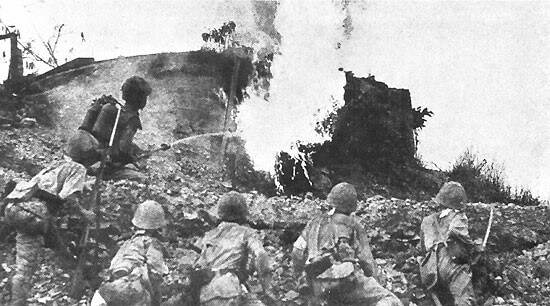
| Year | 1933 (Type 93) 1940 (Type 100) |
| Weapon Type | Infantry Flame-Thrower |
| Origin & Designer | [@designer] |
| Numbers Produced | 8000 (Both Models) |
| Crew | [@crew] |
| Calibre | [@calibre] |
| Elevation | [@elevation] |
| Traverse | [@gun_traverse] |
| Cartridge Weight | [@cartridge_weight] |
| Round Weight | [@round_weight] |
| Barrel Length | [@barrel_length] |
| Overall Length | [@length] |
| Grenade Types | [@grenade_types] |
| Mount | [@mount] |
| Combat Weight | 26 kg |
| Operation | [@operation] |
| Cooling System | [@cooling] |
| Sights | [@sights] |
| Feed | [@feed] |
| Practical Rate of Fire | [@practical_rate_of_fire] |
| Maximum Rate of Fire | 10-12 Second Bursts |
| Blank Cartridge | 12.3 Litres |
| Muzzle Velocity | [@muzzle_velocity] |
| Fuel Capacity | [@fuel_capacity] |
| Minimum Range | [@minimum_range] |
| Effective Range | 22-27m |
| Maximum Range | [@maximum_range] |
| Armour Penetration | [@armour_penetration] |
| Bayonet | [@bayonet] |
| Traction | [@traction] |
| Variants | [@variants] |
| Notes | Both the type 93 and type 100 were man packed flame-throwers. The type 93 were issued to engineer regiments and these equipped flame-thrower companies. The type 100 was a lighter version of the type 93 and was designed for use with paratroops. |